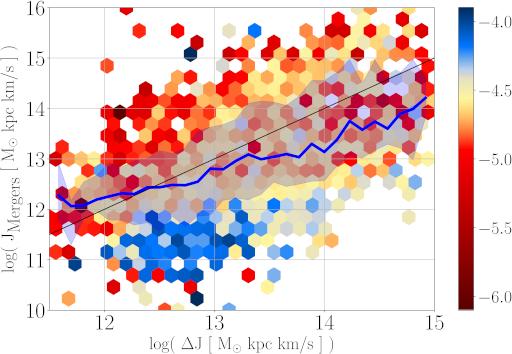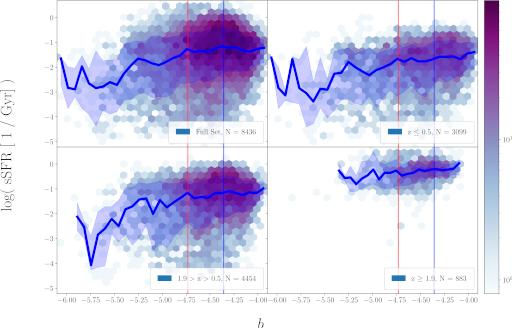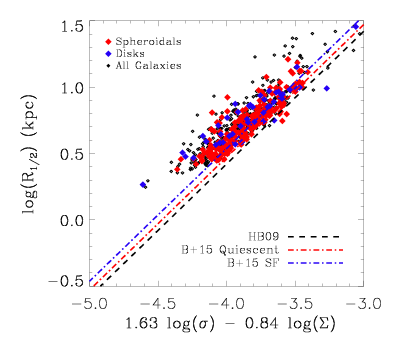Galaxy Properties· · · · · Spin Flips
Angular momentum is a conserved quantity, initially determined for galaxies
by collapsing gas and dark matter with tidal torque from the surroundings.
Over time, the gas condenses in the center and forms the stars that inherit a fixed fraction of the initial spin.
The spin flips and magnitude changes were invesitgated by
Fortuné, 2022.
· · · · · Star Formation
Galaxies provide the potential wells capable of accreting gas from the cosmic web, where it clumps into star-forming molecular clouds. Their star-forming activity depends on the general availability of cold gas and their evolutionary state as they can become quenched due to e. g. gravitationally heated gas reservoirs.
Thus, star-formation in galaxies tied to the evolution of the cosmos
as well as their own formation history.
· · · · · Disk Galaxies
Due to the small masses of the target galaxies and the intended very high resolution level, improving the simulation setup is indispensable. In particular, AGN and stellar feedback models require several enhancements and will be tested extensively. In addition, we implemented the self-consistent positioning of the SMBHs in the centres of their host galaxies. The final set of high-resolution disk galaxies will provide a unique tool for investigating the interplay between internal secular evolution processes and the direct cosmological environment of the galaxies. The setup will allow reproducing structural features which are solely triggered by external processes and may enable quantifying which type of process, external or internal, has dominated the evolution of the galaxy. Further considerations could include the formation of bars and spiral structure, which are present in preliminary simulation runs. Moreover, the spatial distribution of metals in the disk and even globular star clusters will also be investigated.
· · · · · Spheroidal Galaxies and Scaling Relations
Spheroidal galaxies have been studied in many different kinds of simulations within the last years. With the advent of new observational methods, it was discovered that there are actually multiple different pathways for forming spheroidal galaxies, which in particular lead to a large variety of kinematical features that are now observed and can be reproduced successfully in simulations. Additionally, large samples of spheroidal galaxies can be studied statistically with respect to the galaxies’ scaling properties. The physical origins of observed scaling relations like the mass–size relation, the Faber–Jackson Relation, or the Fundamental Plane are still nof fully understood, and simulations are a very useful tool for understanding the dependence of the scaling relations on different physical processes such as feedback from AGN or stellar components, the interplay between the dark and the baryonic components of galaxies, and mass accretion. A large part of the work done within our group deals with these questions, as the origin of this kind of fundamental galaxy properties is one of the major backbones in understanding galaxy formation and evolution processes. For more details, see Remus et al., 2017, Remus et al., 2016, and Remus et al., 2013.
|